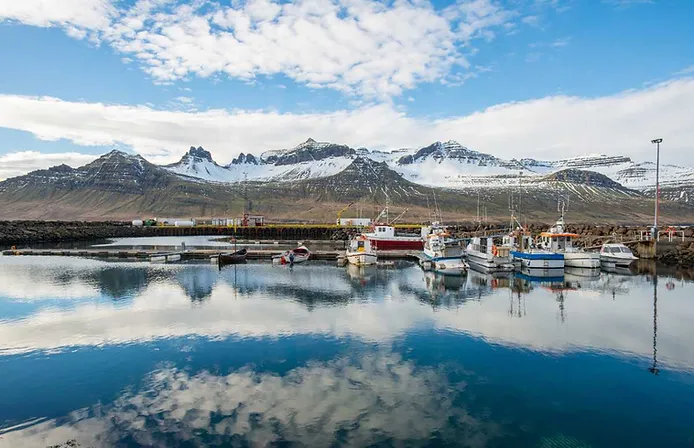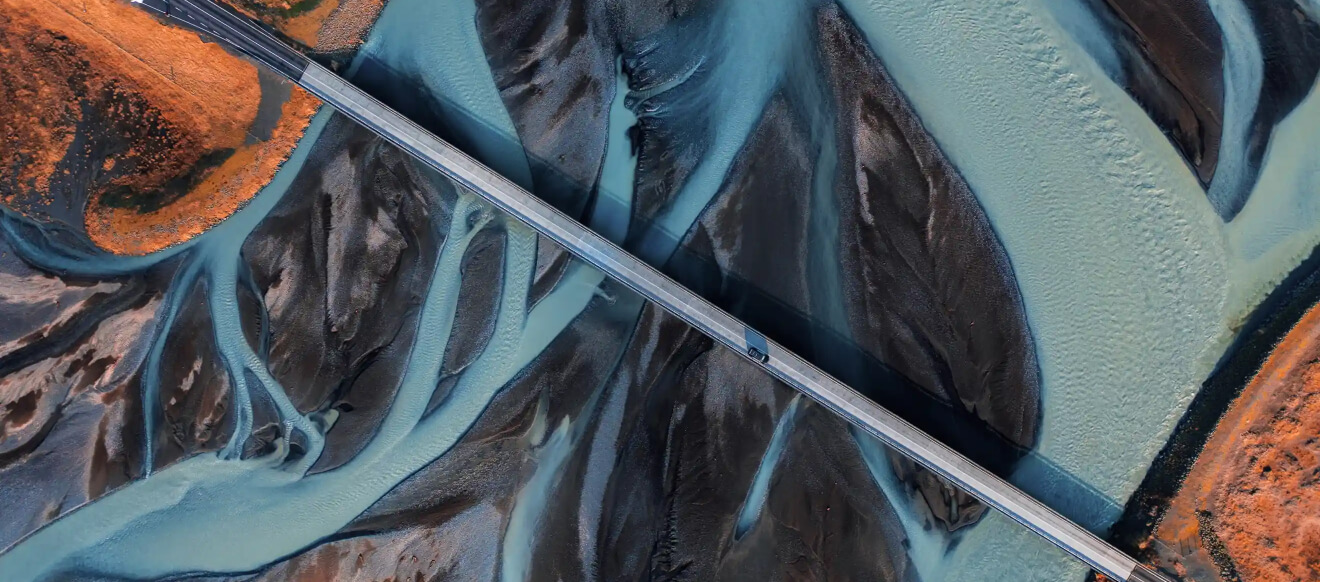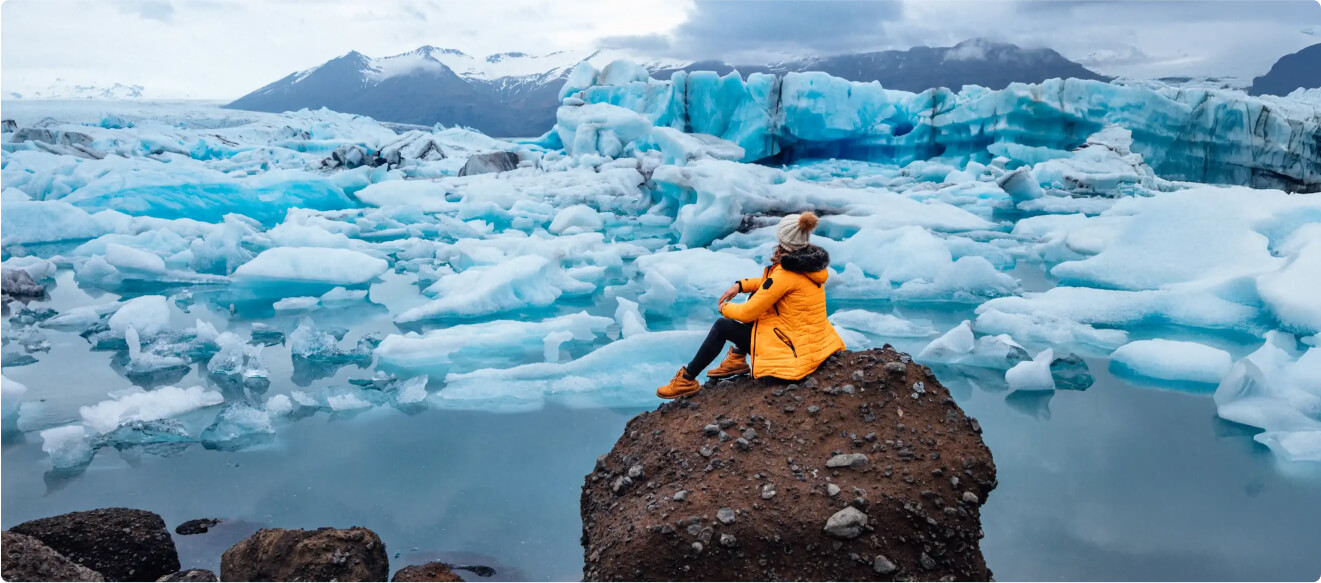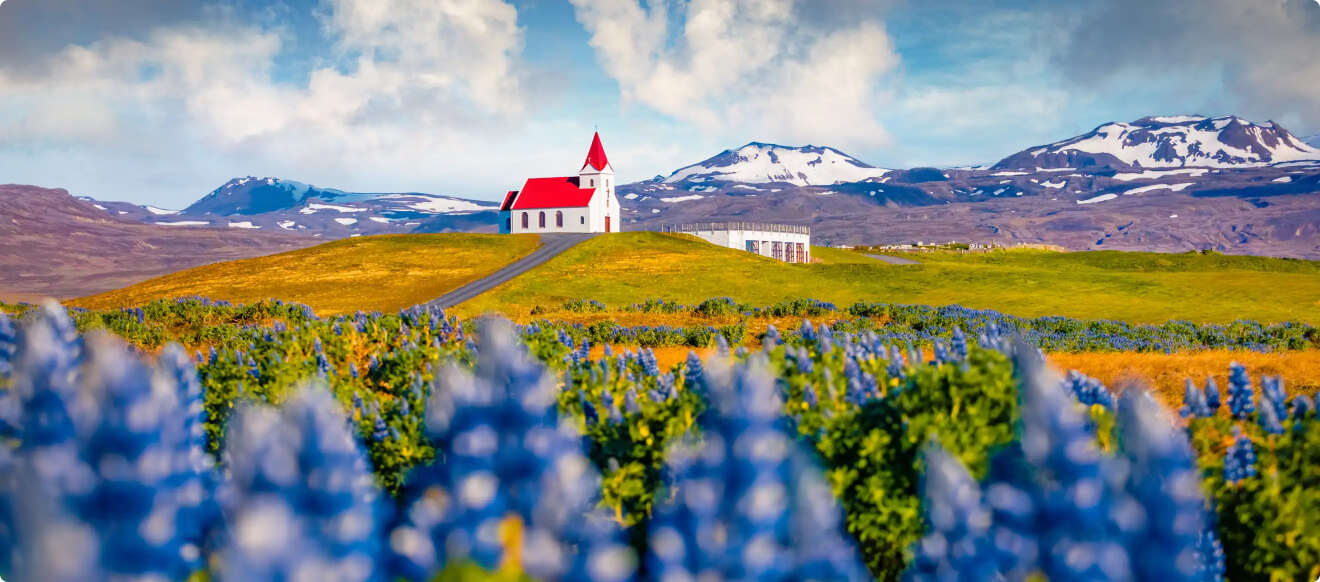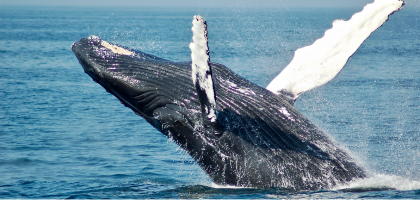East Iceland is not a densely populated part of Iceland. But don’t let the population numbers fool you. In fact, this mostly untouched part of the island holds many magnificent natural wonders. Visitors have plenty of things to do in East Iceland.
The region is rich in history, and culture, and offers dramatic scenery that will put your best telenovela to shame. In this article, we dive into the specifics of the region and everything there is to do and see.
East Iceland
East Iceland makes up roughly 22.721 square kilometers of Iceland. It is characterized by its jagged coastline of fjords, quite unimaginatively referred to as the Eastfjords. It stretches from Bakkafjördur in the north to Alftafjördur in the south.
The eastern region of Iceland is not very densely populated, with the entire east of Iceland sporting a population of just over 13.000. To put it into perspective even further, Egilsstadir is the largest town in the east of Iceland, yet it only has a population of just over 2000!
But wherever human intervention has been kept at bay, nature rules supreme. This is clear with the majestic scenery and natural attractions that can be found in East Iceland. There are so many exciting things to do in Iceland, and Eastern Iceland is not different from the rest of the country. So, here’s a list of the top places and activities to include in your East Iceland itinerary:
1. Become a Piece of Art
Along the popular Ring Road route between Hofn and Egilsstadir, you’ll find a mysterious red chair sitting in the middle of nowhere. You can’t miss it due to the contrast of its bright color with the rest of the landscape. But this is actually an art installation that invites you to become a part of it.
The Red Chair is bolted to the rock and invites you to take a seat. Not only is the stop at Red Chair a welcome breather along the way, but it makes for incredible photographs.
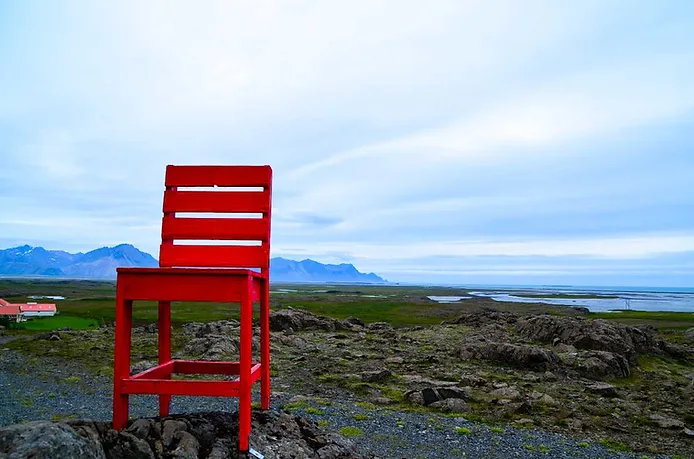
2. Visit Hengifoss Waterfall
Of all the 10 000 waterfalls found on the island, Hengifoss Waterfall is one of the tallest. In fact, it claims third place in the category, clocking in at a staggering 128 meters! Except for its beautiful backdrop of basalt rock, what’s even more striking are the red rings that seem to wrap themselves around the falls. They are embedded in the basalt at intervals. These red rings are actually clay that has formed between the basaltic strata.
Getting to Hengifoss will require a short hike of 2.5 kilometers, but don’t worry, the trail is not challenging. It’s suitable for old and young alike, and will take you max an hour. During the walk, you can beguile the kids with the local folklore. Did you know that elves once inhabited the gorge around Hengifoss Waterfall?
In fact, on a New Year’s day, many, many years ago, two men were peacefully walking through the gorge. Suddenly, they heard the Icelandic hymn “Heidur se Gudi Himnum a” aka “Honour to God in Heaven”. But instead of it sounding as if someone who was also traveling in the gorge was singing it, it seemed as though it came from the rocks themselves!
Once the song finished, a mysterious bell chimed. Realizing that it must be the legendary Hidden Folk of Iceland, they quickly went on their way, hoping that they had not disturbed them. Iceland’s elves don’t take too kindly to being messed with.
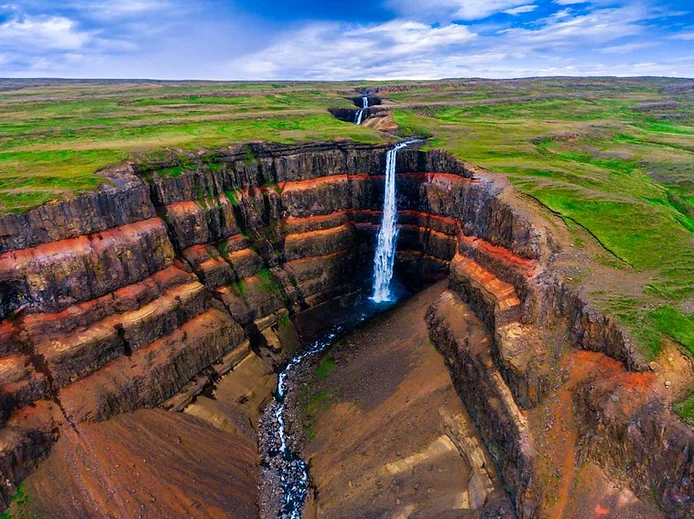
3. Spot a Puffin at Borgarfjördur Eystri
Okay, so even though the place will be there all year round, the activity is seasonal. Each year between May and August, the Puffins make Iceland their breeding grounds. These penguin-like birds with their colored beaks are quite a sight. Once the Pufflings (yes, that’s actually what they’re called) arrive, you’ll suffer from a major cuteness overload.
One of the best places to observe these birds is at Borgarfjördur Eystri where you can get as close as up to 1 meter to these “clowns of the sea”. Here you stroll among their nests on specially built stairs, watching them play and waddle all around you.
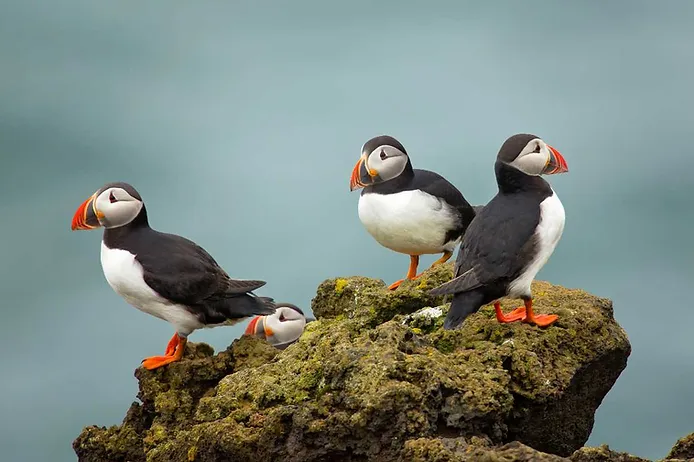
4. See the Gates of Hell at Storurd
Whether the Gates of Hell really are at Storurd, we’ll leave it up to you to decide. But the strange gap in the majestic mountain range has been there for centuries and does look like some sort of portal straight out of Lord of the Rings. But if it truly is the Gates of Hell, there’s clearly a fine line between Heaven and Hell.
The hike to Storurd is fairytale-like with beautiful meadows, gigantic boulders, and ponds with bright blue water. And the best part of Storurd? It’s a pretty well-kept secret, few know about this magical place. So, visitors usually find themselves alone and completely at peace in these magnificent surroundings.
The hike is not particularly challenging, but we do recommend taking it on during the warm summer months from mid-July to mid-September. There are various trail options to Storurd that range from a 2.5 to a 6-hour walk, and it’ll be up to you which fits your time schedule best.
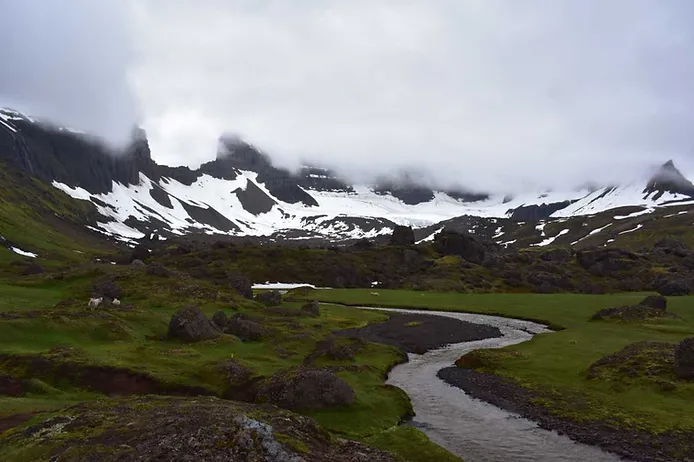
5. Visit Seydisfjordur
Seydisfjordur is a charming little fishing village with brightly colored buildings. It lies just half an hour off the Ring Road and there are plenty of places one can overnight at in order to explore the town properly. Take a walk along the rainbow-colored road that will lead you to a bright blue and white-trimmed church (the perfect photo opp!).
Or pop into some of the local museums. There are also exciting activities around the town all throughout the year. From hiking and golfing during the summer months to skiing during the winter months. But whatever you do, do not miss this quaint little town on the Iceland East Coast!
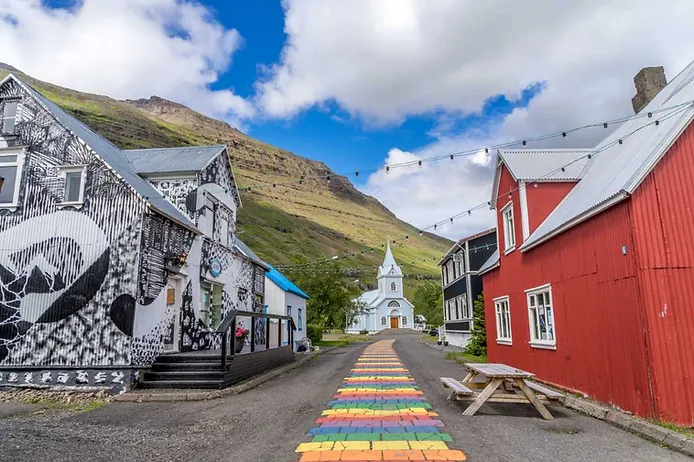
6. Take a Stroll in Hallormsstadaskogur National Forest
There is a joke in Iceland that is founded on a pretty serious and sad reality: “How do you find your way out of an Icelandic forest? Just stand up.” That’s because deforestation nearly devastated the island. In fact, most of Iceland was completely devoid of forestation within just a year of the first settlers arriving in the country.
Staring an environmental crisis in the face, a Brichwood forest was granted government protection in 1905. This area is now known as Hallormsstadaskogur National Forest and boasts over 85 species of trees across 550 hectares of land. The forest has also become a mecca for avid birdwatchers! They can look forward to seeing everything from Snipes and Ravens to Eurasian Woodcocks, Goldcrests, and Redwings.
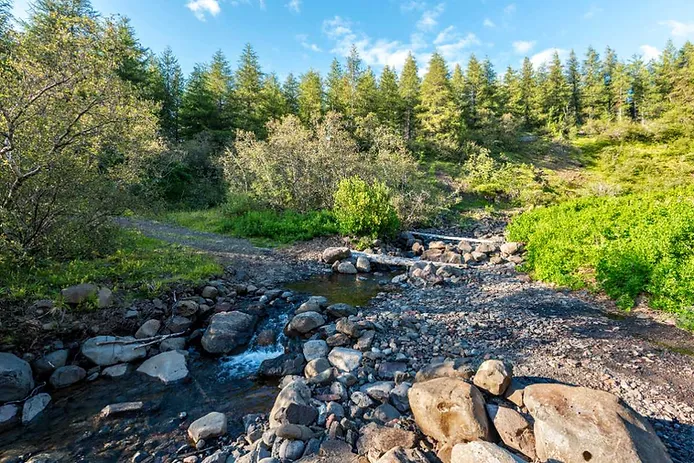
7. Road Trip the Eastern Fjords of Iceland
Sometimes you just want to take a relaxing road trip drive and see what you can spot along the way. Driving around Vattarnes Peninsula from Reydarfjördur to Faskrudsfjördur is exactly such a ride. This path will take you around many of the east fjords in Iceland, with breathtaking views over the East Iceland landscape. If you’re lucky, you’ll even be able to spot a whale or two frolicking around in the fjords.
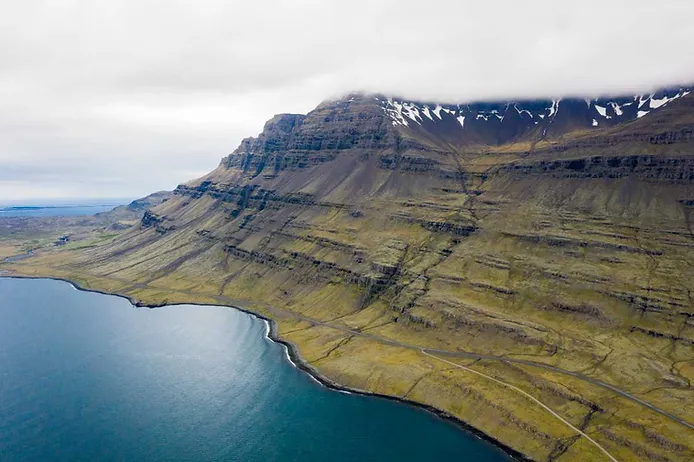
8. Visit Mjoifjordur
Mjoifjordur is a magical little town located on the shores of Mjoifjordur aka “the Narrow Fjord”. This little town with just a handful of permanent residents can only be accessed for a few months every year due to the Iceland weather and snow. But this truly is a magical place if you can visit.
Not only is it absolutely beautiful, but the shores of the fjord feel otherworldly due to the area’s calm weather compared to the outskirts. You’ll also find one of the best photo opps in East Iceland here; an old World War II US Navy shipwreck.
The wreck surrounded by water and mountains makes for quite the scene. From Mjoifjordur you can also take hikes to some of the more remote waterfalls (truly walking the road less traveled).
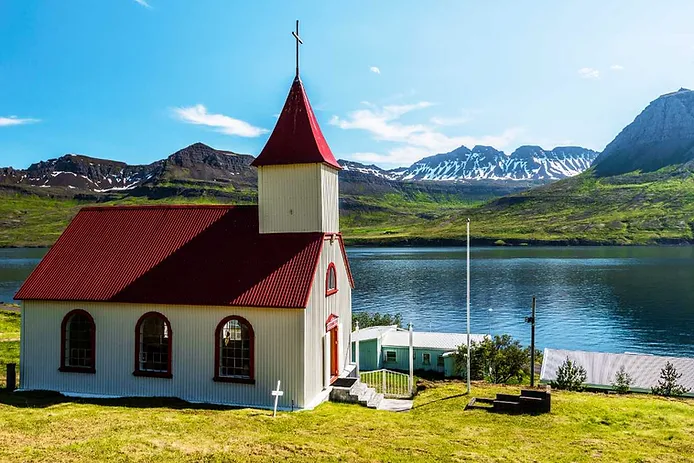
9. Take a Dip in a Natural Hot Waterfall
This is an incredible experience. Laugarvellir is a very remote geothermal valley with a waterfall and pool situated in the northeast of Iceland. Although the water generally stays between 39-41 degrees Celsius, it’s always wise to just dip in a toe before plunging in.
You’ll also be soaking at an altitude of 600 meters. Getting to Laugarvellir is quite challenging and there’s no way you’ll be able to take on the gravel roads without a 4x4. But this is a blessing in disguise since it ensures a peaceful soak with not many people around.
Directions to Laugarvellir are as follows: travel 7 km south from Egilsstadir down the Ring Road before turning east on Road 931. Cross the bridge and then take Road 933 for a short while before turning onto Road 910. Once you’ve reached Halslon Dam, you’ll find Laugarvellir roughly 7 km further, but this 7 km can only be traveled by foot, so come prepared.
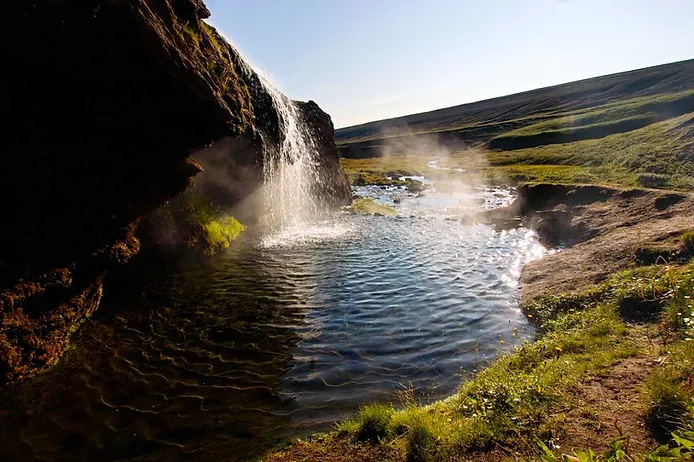
10. Sleep Over in a Church
When you pass Kirkjubaer, one can be forgiven for thinking that you’ve just passed a very cute little church. And you’ll be half right. With its steeple and white exterior and bright blue roof, door, and windows. Yet, It once served as a church to the villagers in Stodvarfjördur, but when the new and bigger church was built, this one started to fall into disrepair.
Many found this historical building crumbling into ruin heartbreaking, especially a local couple. They bought the church and renovated it. Today, it serves as local accommodation to visitors. Here they can rent the house/church with many of its original accessories and furniture still inside.
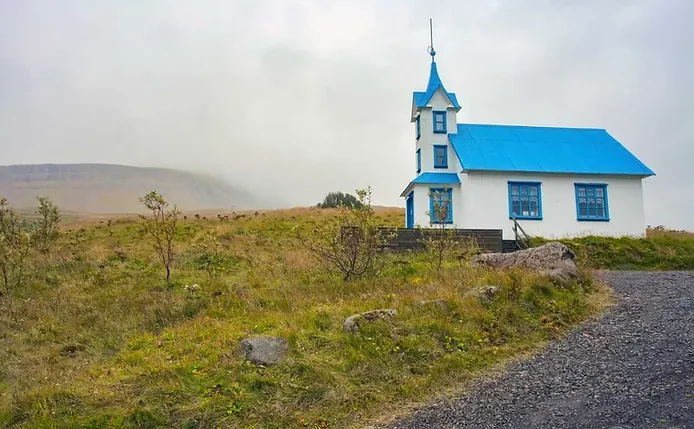
11. Hike the Studlagil Canyon
This jaw-dropping canyon is a hidden gem and well-kept secret in East Iceland. Sadly, not many get to experience the steep basalt cliff walls, and the bright blue glacial water running through the canyon. But although the hike is just over 9 km long (round trip), the hike is fairly challenging.
Not only is the trail not well-maintained, but you’ll also be walking on slippery basalt rocks. You’ll need to ensure that you’re wearing the appropriate hiking boots. But those who do decide to take on the Studlagil Canyon hike get to experience the hike of a lifetime.
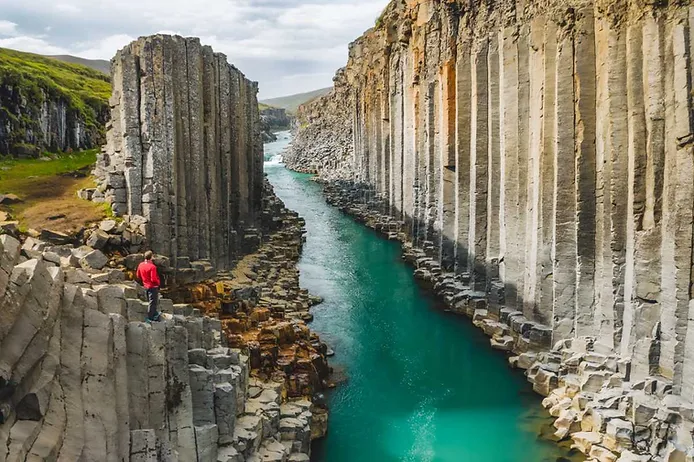
12. Admire Bulandstindur
Bulandstindur is a mountain with a distinct pyramid-like shape that is over 8 million years old. It is surrounded by all sorts of myths and legends that have inspired writers and artists all throughout the years. For one, it is considered to be one of Iceland’s biggest energy sources.
And secondly, in a very similar tale to the one of Godafoss Waterfall, it is believed that the country’s chiefs throw their pagan idols from the top. This moment symbolized the island’s conversion to Christianity. That’s why Bulandstindur is also called Godabord, meaning “God’s Rock”.
Whether you believe in the stories or not, there are various trails that will bring you closer to the 1069-meter-high peak. Although it won’t give you clarity on the different folklore, it’ll definitely give you unforgettable views over East Iceland.
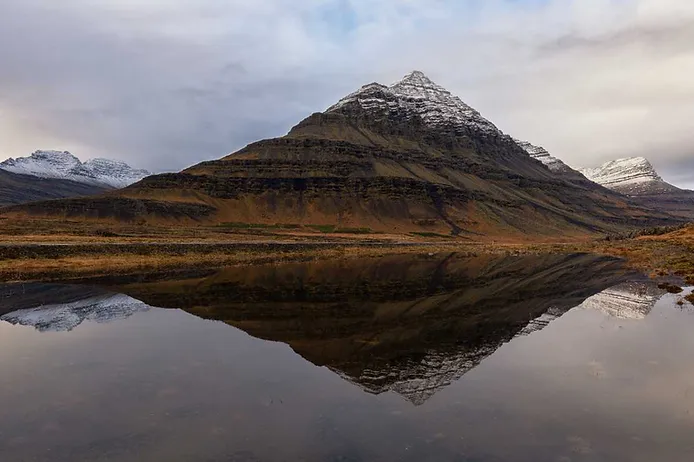
13. Stop at Stapavik
Stapavik is an abandoned harbor on the way to Borgarfjördur Eystri. To get there, you’ll need to take a short hike from the farm, Unaos, and pass the black beach ‘till you reach the end of the trail on the edge of a cliff.
It is here that you’ll find the ruins of the harbor that once drove fear into every sailor and his wife. The area is known for its rough seas and raging storms, and the harbor claimed many lives of sailors unloading supplies. After the last incident in the 1940s, the port was closed for good.
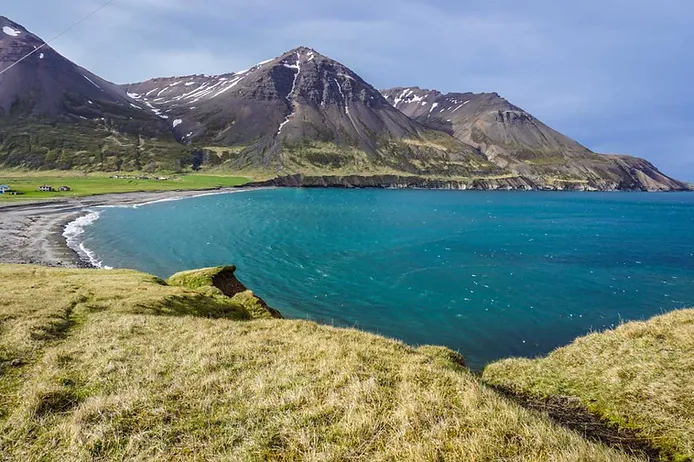
14. Take a Snap of the Hvalnes Lighthouse
The Hvalnes Lighthouse was built in 1954 and stands just over 11 meters tall. Many visitors flock to this lighthouse overlooking the beaches of Hvalnes Nature Reserve. In this area, one can experience interesting shapes and bright orange color.
The lighthouse is still active today, so it’s not open to the public. But you can still take a pretty impressive picture, especially on overcast days. The orange lighthouse creates a stark contrast to the dark, brooding clouds.
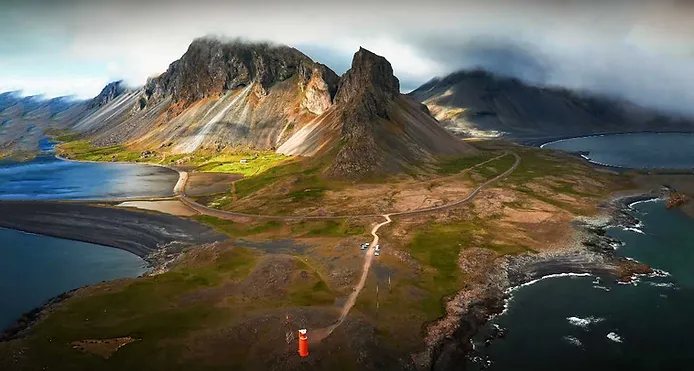
15. Visit Vatnajökull National Park
Vatnajökull National Park is the largest National Park in Iceland and covers approximately 14% of the country’s land surface. The park is incredibly impressive and hosts a ton of must-visit attractions, such as Vatnajökull (the largest glacier in Europe).
Here you can also find Jökulsarlon Glacier Lagoon, and Hvannadalshnukur (Iceland’s highest mountain). A trip to Iceland is not the same without stopping at this incredible national heritage site.
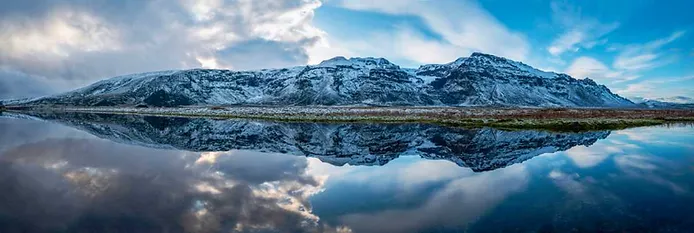
East Iceland: a Treasure Waiting to be Discovered
As you might’ve gathered from many of the incredible places we’ve mentioned in this article, dew people who know about or visit Iceland’s east coast. This makes it an absolute hidden gem just waiting to be discovered.
So, once you’ve arrived on the island, and you’ve rented your car in Iceland, make your way to the eastern side of the island. You won’t be sorry with everything that’s waiting there for you!




